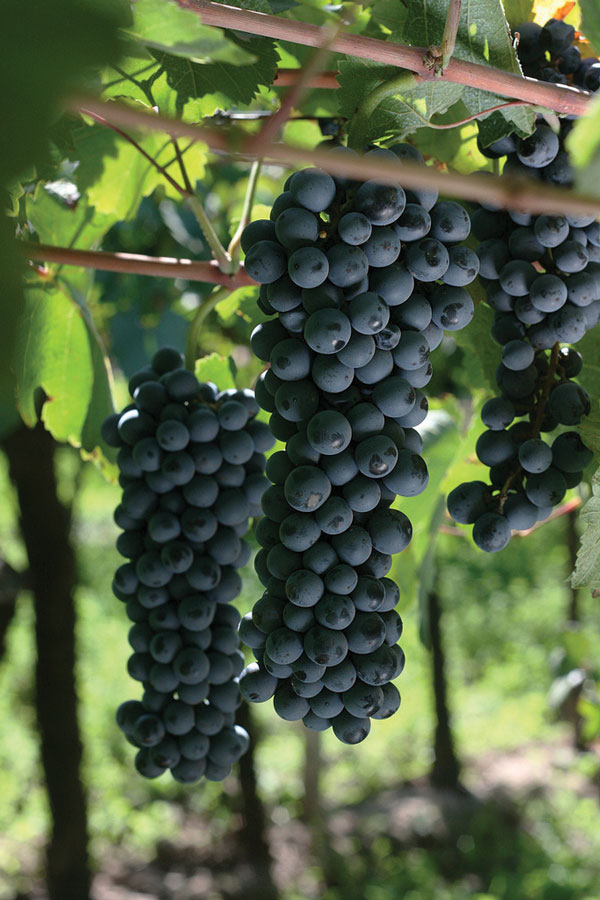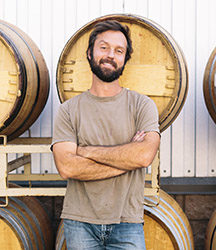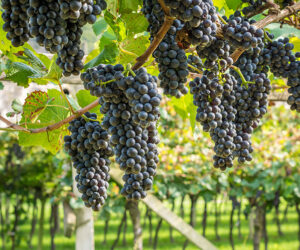
What’s in a name? There is a lot in a name, but apparently, there is a considerable amount of subjectivity. As we focus in this issue’s topic, I was approached by the editors about a grape that goes by the name of Bonarda. Honestly, I was surprised that I didn’t know it as it was described to me. Did you know it is Argentina’s second most planted grape varietal after Malbec? So the research continued — surely there must be more information about this grape? But as I dug more into Bonarda, I found the information confusing. Well it turns out the grape I was researching is two, or maybe even seven, unique wine grape varieties depending on the story you want to believe. And the icing on the cake is that the “name” for the most abundant varietal of them, Bonarda, is not its proper name!
A grape varietal named Bonarda exists, but that is not actually the focus of this column. That grape is more properly known in Italy as Bonarda Piemontese, an aromatic, well-colored Italian red with small bunches and soft tannins. The resource goes on to say the name “Bonarda” is a misleading name applied to at least seven distinct varieties in northern Italy. Those varieties are Croatina, Durasa, Neretta Cuneese, Neretto Duro, Refosco Dal Peduncolo Rosso, Uva Rara, and Douce Noir. The last, Douce Noir, is where we will end up focusing our attention today . . . and we will soon see an interesting story unfold.
Until the end of the nineteenth century, Douce Noir was one of the most widely planted grapes of the Savoie region in eastern France. It was widely believed to have originated in the Piemonte region of Italy, where it was often confused with Dolcetto (Dolcetto Nero). The confusion laid in the fact that the evidence tracing a variety’s origin many moons ago was based on ampelographic, or the morphologic features of the plant. White versus red fruit, leaf shape, hair patterns on the underside of the leaf . . . to name a few key ampelographic characteristics. And also, the written evidence needed to be teased from the journals of scientist and scholars. Some evidence was also contained in the municipal official scrolls. All of which took considerable time and effort for people trying to understand more about this grape.
Then along came science to the rescue. In 2006 and again in 2008, after bringing in DNA profiling, the research definitely supported the birthplace of Douce Noir to in fact be Savoie in France and not Piemonte of Italy. In Savoie it had many synonyms, and none of them mentioned Bonarda in their name. One of those synonyms was Charbonneau, which had also spread north to the Jura department.
Reading a little further into the name of French origin, it was further determined that a variety now cultivated in California, under the name Charbono, is identical to the Charbonneau/Douce Noir of Savoie. At some point the Charbonneau made it to Piemonte, where its name was Italianized to Charbono and lived out its life until it was no longer commercially cultivated there. The distance is not that far, maybe a couple of hundred kilometers (a little over 100 miles), so this makes a lot of sense, even without the historical records. The story goes on in that Charbono is thought to have been brought to California with Italian immigrants in the 1800s as the other northern Italian varietal, Barbera. But ampelographic evidence from UC-Davis provided by Dr. Harold Olmo proved that this “Barbera” was actually Charbono/Douce Noir. Which led to the first labeled vintage of Charbono in California in 1941, being produced by the famed Napa Valley winery, Inglenook.
Its migration away from Europe continued. The Charbonneau/Douce Noir grape made it to Argentina under the name Bonarda. DNA evidence does not support any similarities to Bonarda Piemontese or any of the six other aforementioned varieties of that Italian region other than the region from which it emigrated. Argentina now reports over 19,000 hectares of the misnamed “Bonarda.” To try to clear up the confusion, in 2011 the name Bonarda Argentine was given to the grape growing in the country. It is mostly cultivated in the Mendoza and San Juan regions where the hotter climates are ideal for it since it requires a long hangtime to get it to fully ripen. High-altitude vineyards can also do well with this varietal with their more intense summer sunshine. This varietal’s second most planted region is in California and there are a few small pockets of vines found in Italy and its native home of France.
Until the end of the nineteenth century, Douce Noir was one of the most widely planted grapes of the Savoie region in eastern France.
What of the wines made from this grape? It is red, deeply colored, and relatively light in tannin considering its color. This becomes the perfect combination for use as a blending wine. This also provides more clues into Bonarda’s importance in a blend, and not as a varietal wine.
What makes a grape varietal good for blending and how is it chosen to be a blending component rather than a varietal? Consider the marketing of commercial wines. The Old World wines were generally blended because of the local knowledge of the indigenous grapes and what was best for the local population. California, where Charbono was concerned, historically has focused on marketing wine from a variety perspective. Therefore the focus on Charbono was to produce a varietal wine and enhance it over time with oak or oak-adjunct aging. In Argentina the variety plays a secondary role in taming the more noble Malbec, but there are now varietal wines coming out as well. These typically have low to no oak on them and are lower tannin, higher acidity, fruit-forward red wines.
From a winemaking standpoint, how do you decide whether to use Bonarda in a blend or as a varietal? With Bonarda having the ability to be wonderfully fresh and drinkable young red wines, to something that will hold up in a barrel, the blending game over time has been a combination of tradition, science, and the gut feeling and the passion of the people working the land. This is where your artful instinct comes in. Carefully consider your maceration technique (where the color will extract fast). When you move to press, start very light to express the free run, only to follow with a firmer pressing cycle that keeps that press fraction separate for later blending. For attempting a varietal wine, this is the preferable route.
I personally would not recommend an extended maceration as this will extract more potentially bitter compounds from the seeds, and also runs the risk of premature oxidation if the headspace is not adequately protected. Depending on the volume you are making, larger batches can go into a barrel, while smaller volumes should go to glass or stainless where the winemaker can experiment with oak adjuncts such as staves or chips. I just caution to not allow this wine to sit around on oak too long. When you get what you like, rack as you normally would and continue to age a few more months, where you will rack it again and taste to see if it is ready for the bottle.
Finally, in my research on this grape varietal I found out that Bonny Doon Vineyards was one of the few in California producing Charbono wines. Knowing fellow WineMaker columnist Alison Crowe (Wine Wizard) worked for a number of years there, I emailed her for some input on working with this grape. Here is her advice:
“How you approach Charbono definitely depends on where you source it and how you make/blend it. The only Charbono I’ve worked with is from a vineyard in southern Monterey County. We got more blackberry fruit character (without sweetness) rather than red color and red fruits, but there was a bright plum skin quality about it.
“The color was always very dark and one of the challenges tended to be in tannin management as well as in managing reduction (it had a tendency to throw H2S after it went dry). You want to make sure it gets a lot of oxygen in the fermenter, as well as generous rackings during its life. Our versions could take a very robust oak regimen as well because of their tannin structure.
“I wouldn’t ferment Charbono on any tannin products unless the grapes are lacking the structure. When blending, we found it did well with something ‘sweeter’ like a Zinfandel or a Petite Sirah. On its own our Charbono wines were a little rough and angular.”
California-Style Charbono (5 gallon/ 19 L yield)
Ingredients
125 pounds (57 kg) Charbono fruit
Distilled water
10% potassium metabisulfite (KMBS) solution (Weigh 10 grams of KMBS, dissolve into about 50 mL of distilled water. When completely dissolved, make up to 100 mL total with distilled water.)
Tartaric acid
5 g Lallemand EC1118
10 g Diammonium phosphate (DAP)
10 g Go-Ferm
10 g Fermaid K (or equivalent yeast nutrient)
Malolactic fermentation starter culture (CHR Hansen or equivalent)
Equipment
15-gallon (57-L) food-grade plastic bucket for fermentation
5-gallon (19-L) carboy
1–2 one-gallon (3.8-L) jugs
Racking hoses
Destemmer/crusher
Wine press
Inert gas (nitrogen, argon, or carbon dioxide)
Ability to maintain a fermentation temperature of 85–90 °F (29–32 °C) TIP: You may have a need to keep it warm, in this case wrapping the fermenter in an electric blanket or other heat-generating source may be necessary.
Thermometer capable of measuring between 40–110 °F (4–43 °C) in one degree increments
Pipettes with the ability to add in increments of 1 milliliter
Step by step
- Clean and sanitize all your winemaking tools, supplies, and equipment.
- Crush and destem the grapes. Transfer the must or juice to your fermenter.
- During the transfer, add 15 mL of 10% KMBS solution. This addition is the equivalent of 50 ppm SO2.
- Take a sample to test for Brix, acidity, and pH. Keep the results handy. Layer the headspace with inert gas. Keep covered and in a cool place overnight.
- Go back to those lab results you took yesterday. Typical Brix for this style is 24–25 °Brix. Typical acid levels will be 0.65–0.7%. Adjust as necessary using tartaric acid. If the acid is higher than 0.7%, don’t panic, this recipe calls for a minimum final acidity of 0.5%. Higher acid won’t hurt here.
- Prepare yeast. Heat about 50 mL distilled water to 108 °F (42 °C). Mix the Go-Ferm into the water to make a suspension. Take the temperature. Pitch the yeast when the suspension is 104 °F (40 °C). Sprinkle the yeast on the surface and gently mix so that no clumps exist. Let sit for 15 minutes undisturbed. Measure the temperature of the yeast suspension. Measure the temperature of the must. You do not want to add the yeast to your cool juice if the temperature of the yeast and the must temperature difference exceeds 15 °F (8 °C). To avoid temperature shock, you should acclimate your yeast by taking about 10 mL of the must juice and adding it to the yeast suspension. Wait 15 minutes and measure the temperature again. Do this until you are within the specified temperature range. Do not let the yeast sit in the original water suspension for longer than 20 minutes.
- The next day suspend the Fermaid K in a little distilled water (usually ~20 mL). Add to must or juice and mix well.
- You should see signs of fermentation within about one to two days. This will appear as some foaming on the must surface and it will appear that the berries are rising out of the container. This is referred to as the cap rise. You need to have on hand the ability to push the grapes back into the juice to promote color and tannin extraction. This is called “punching down” and this should be done three times per day using a clean utensil.
- Monitor the Brix and temperature twice daily during peak fermentation (10–21 °Brix). Morning and evening is best and more often if the temperature shows any indication of exceeding 90 °F (32 °C). Place frozen water bottles in the fermentation if too warm then mix the must. Wait 15 minutes, mix, and check the temperature again. Do this as often as it takes to keep the temperature between 85–90 °F (29–32 °C). Do not cool off to less than 80 °F (27 °C).
- At about 19 °Brix, dissolve the DAP in a small amount of distilled water and mix into the must
- When the Brix reaches 0 (about 5–7 days) transfer the must to your press. Keep the free-run wine separate from the press portion for now. Be sure to label your vessels.
- Transfer the free-run juice to your 5-gal. (19-L) carboy and press fractions into the one-gallon (3.8-L) jugs. Your press fraction should only require 1–2 jugs. Make sure you do not have any headspace in the vessels. Inoculate with your malolactic (ML) bacteria. Check the manufacturer’s instruction on how to prepare and inoculate. Cover the tops with an airlock to allow CO2 gas to escape.
- Monitor ML fermentation using a thin layer chromatography assay, available from most winemaking suppliers. Follow the manufacturer instructions.
- When the ML is complete, add 2 mL of fresh KMBS (10%) solution per gallon (3.8 L) of wine. This is the equivalent to ~40 ppm addition. Place the wine in a cool place to settle
- Consider adding some French and American oak chips to your press fractions. Do not treat the entire lot.
- After two weeks, test for pH and SO2, adjust the SO2 as necessary to attain 0.8 ppm molecular SO2. (There is a SO2 calculator at www.winemakermag.com/sulfitecalculator). Check the SO2 in another two weeks and adjust. Once the free SO2 is adjusted, maintain at this level. You’ll just need to check every two months or so.
- Rack the wine clean twice over 6–8 months time frame to clarify. Fining and/or filtration are generally not needed if SO2 levels are maintained and if no surface films or indications of subsequent fermentations. Consult www.winemakermag.com for tips on fining and filtration if utilized.
- Once the wine is cleared (about twelve months after the completion of fermentation) it’s time to organize a blending party to integrate the press/oak fraction back into the free run. You may not need it all, use your judgement and make what you like.
- If all has gone well to this point it can be bottled without filtration. Maintain sanitary conditions while bottling.






